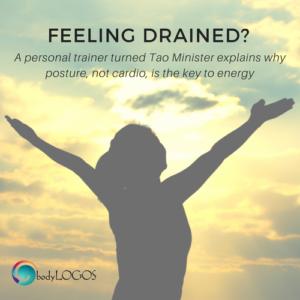BodyLogos Blog
Welcome to the BodyLogos blog. Here’s where you’ll get your dose of alignment and balance with grace. (Sign up here to join 1,000 other blog subscribers.)
Redefining Strength
I want to change our perception of strength. Strength is the ability to meet resistance and influence an outcome without compromising ourselves. And we already have it.
Strength is not an attribute; it’s a state of being. Gladiators, bodybuilders, and football players demonstrate strength through brute force, sheer willpower, muscle mass, and relentless pursuit. But we’re also quick to identify dancers and martial artists as strong. Their medium taps into a sense of vulnerability, balance, alignment, controlled power, and grace—but no one can deny their strength. Strength may look different on each of us, but it is an inherent part of who we are.
You are not weak by nature; you are stronger than you think. Your strength is not something you need to kill yourself to gain—it is already within you, waiting to be excavated. The key is to stop chasing something you already have and tap into it, so you can manifest that strength in your everyday life.
Because we don’t think we’re strong, we approach resistance with the idea that we’re not enough. We throw everything we have at it and push past our physical, mental, and emotional limitations. We see strength as domination, but it’s not.
When you learn to listen to your body’s divine wisdom, you cultivate a sense of where your body is developing tension instead of standing in its strength. You end the vicious cycle of unrealistic expectations, injury, and self-criticism and learn how to consciously embrace responsible growth. You stop compartmentalizing your strength into emotional, physical, and mental pieces and operate from the strength of your being at all times.
You learn how to align yourself with gravity—instead of working against it—so you can channel your strength to meet life’s resistance. As you meet resistance with equal parts power and alignment, you transform tension into strength
As in the sword dance above, the power lies in bringing just the right amount of force—not too little and not too much. By meeting the sword’s weight, I meet gravity. I am tapped into a larger source of energy, free of tension, and discover a strength that is wholly and uniquely mine.





 About Tammy Wise
About Tammy Wise
Fitness For Living
by Tammy WiseWhat carries your workout vitality into your life?
Proper posture is the energy conductor that plugs you into your strength.
Posture that is relaxed and aligned wakes up your mind and muscle’s. You plug into gravity—a universal energy Source. After all, we are an energy resource—we die. The universe is an energy Source—it’s infinite!
When posture isn’t considered you use up your energy reserve quickly. You crave sleep and food to recharge, or external stimulants to keep up. Posture extends the life of your body’s battery of life force.
Listen to this 17-minute talk, broadcast from the Gary Marshall Theater in Burbank California, about the power of posture.